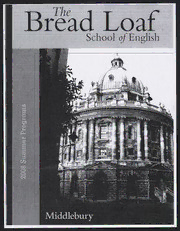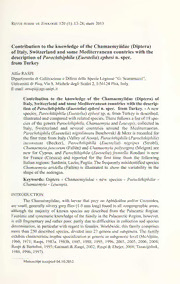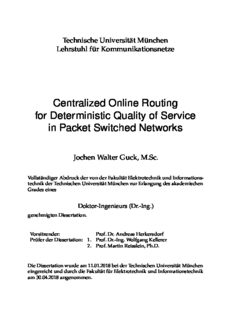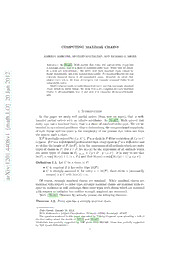
Preview Computing Maximal Chains
COMPUTING MAXIMAL CHAINS ALBERTOMARCONE,ANTONIOMONTALBA´N,ANDRICHARDA.SHORE Abstract. In [Wol67], Wolk proved that every well partial order (wpo) has amaximalchain;thatisachainofmaximalordertype. (Notethatallchains in a wpo are well-ordered.) We prove that such maximal chain cannot be 2 foundcomputably, noteven hyperarithmetically: Nohyperarithmetic setcan 1 compute maximal chains in all computable wpos. However, we prove that 0 almosteveryset, inthesenseofcategory, cancompute maximalchainsinall 2 computablewpos. n Wolk’soriginalresultactuallyshowsthateverywpohasastronglymaximal a chain,whichwedefinebelow. Weshowthatasetcomputesstronglymaximal J chains in all computable wpo if and only if it computes all hyperarithmetic sets. 0 2 ] O L 1. Introduction . h In this paper we study well partial orders (from now on wpos), that is well- t founded partial orders with no infinite antichains. In [Wol67], Wolk proved that a m every wpo has a maximal chain, that is a chain of maximal order type. We are in- terestedintworelatedproblems. Oneisdeterminingthecomputationalcomplexity [ of such chains and the other is the complexity of the process that takes one from 1 the wpo to such a chain. v IfP ispartiallyorderedby≤ ,C ⊆P isachaininP iftherestrictionof≤ toC 8 P P islinear. IfP isawell-foundedpartialordertheneverychaininP isawell-orderand 0 4 wedefinetheheightofP,ht(P),tobethesupremumofallordinalswhichareorder 4 types of chains in P. For x∈P, let ht (x) be the supremum of all ordinals which P . are order types of chains in P = {y ∈P | y < x}. It is easy to see that 1 (−∞,x) P 0 ht(P)=sup{htP(x)+1|x∈P } and that htP(x)=sup{htP(y)+1|y <P x}. 2 1 Definition 1.1. Let C be a chain in P: : v • C is maximal if it has order type ht(P); i • C is strongly maximal if, for every α < ht(P), there exists a (necessarily X unique) x∈C with ht (x)=α. P r a Of course, strongly maximal chains are maximal. While maximal chains are maximalwithrespectto ordertype, stronglymaximalchainsaremaximalwith re- specttoinclusionaswell(althoughthereexistwposwithchainswhicharemaximal with respect to inclusion but neither strongly maximal nor maximal). Wolk ([Wol67, Theorem 9]) actually proved the following theorem: Theorem 1.2. Every wpo has a strongly maximal chain. Date:Saved: January16,2012. 2010 Mathematics Subject Classification. Primary: 03D80;Secondary: 06A07. ThequestionansweredinthispaperwasaskedbyThierryCoquanduponattending atalkof thefirstauthorabouttheresultsof[MS11]and[Mon07]. Montalba´n was partially supported by NSF grant DMS-0901169. Shore was partiallysupported byNSFGrantDMS-0852811. 1 2 ALBERTOMARCONE,ANTONIOMONTALBA´N,ANDRICHARDA.SHORE Wolk’s result appears also in Harzheim’s book ([Har05, Theorem 8.1.7]). The result was extended to a wider class of well founded partial orders by Schmidt ([Sch81]) in the countable case, and by Milner and Sauer ([MS81]) in general. We can now state precisely the questions we are interested in: Question 1.3. If P is a computable wpo, how complicated must maximal and strongly maximal chains in P be? Question 1.4. How complicated must any function taking the wpo P to such a maximal chain be? As usual, the computability of P means that both P ⊆N and ≤P ⊆N×N are (Turing) computable sets. In our answers to these questions, we will also measure complexity in terms of Turing computability as well as the hyperarithmetic hierar- chywhichisbuiltbyiteratingtheTuringjump(haltingproblem)alongcomputable well orderings. (Definitions and basic facts can be found, for example, in [Sac90].) We answer Question 1.3 for strongly maximal chains by showing (Theorem 3.2) that, for every hyperarithmetic set X, there is a computable wpo P such that any strongly maximal chain in P computes X. Thus any set computing strongly maximal chains in every computable wpo must lie above all the hyperarithmetic sets. For maximal chains we show that is far from true. Indeed, almost every set, in the sense of category, can compute maximal chains in every computable wpo (Theorem 4.1) while such “generic” sets do not compute any noncomputable hyperarithmetic set. On the other hand, we also show (Theorem 3.3) that the chains must be highly noncomputable in the sense that for every hyperarithmetic set X there is a computable wpo P with no maximal chain computable from X. We answer Question 1.4 by showing that there is no computable or even hyper- arithmetical procedure for constructing even maximal chains in computable wpos. To be more precise, any function f(e,n) such that, for every computable wpo P withindexe,thefunctionofndeterminedbyf ande(λnf(e,n))is(thecharacter- istic function of) a maximal chain in P must itself compute every hyperarithmetic setX (Theorem5.1). Other informationaboutthis questionis alsoprovidedin§5. Theorem 1.2 is somewhat similar to the better known result of de Jongh and Parikh ([dJP77]): Theorem 1.5. Every wpo P has a maximal linear extension, i.e. there exists a linear extension of P such that every linear extension of P embeds into it. We call such a linear extension a maximal linear extension. In [Mon07] the second author answered the analogues of Questions 1.3 and 1.4 for maximal linear extensions. His answer for the first question is very different than ours for maximal and strongly maximal chains but essentially the same for the second. Theorem 1.6. Every computable wpo has a computable maximal linear extension, yet there is no hyperarithmetic way of computing (an index for) a computable max- imal linear extension from (an index for) the computable wpo. These results illustrate several interesting differences between the analysis of complexityintermsofcomputabilitystrengthasdonehereandaxiomaticstrength in the sense of reverse mathematics as is done in [MS11]. (See [Sim09] for basic background in reverse mathematics whose general goal is to determine precisely which axiomatic systems are both necessary and sufficient to prove each theorem of classical mathematics.) From the viewpoint of reverse mathematics, all of the theorems analyzed computationally here and in [Mon07] are equivalent. Indeed, in [MS11]thefirstandthirdauthorshowedthatTheorem1.5andTheorem1.2(indeed COMPUTING MAXIMAL CHAINS 3 even the version for maximal chains) for countable wpos are each equivalent (over RCA ) to the same standardaxiom system, ATR . As we have explained, however, 0 0 the computationalanalysisofthese three theoremsinthe senseofQuestion1.3are quite different. Computablepartialordersallhavecomputablemaximallinearextensions[Mon07]. Computable wpos all have hyperarithmetic maximal and even strongly maximal chains as is shown by the proof in ATR of Theorem 1.2 in [MS11]. However, 0 stronglymaximalchainsforcomputable wposmustbe ofarbitrarilyhighcomplex- ity relative to the hyperarithmetic sets while maximal chains can be computably incomparable with all noncomputable hyperarithmetic sets. Yet another level of computational complexity within the theorems axiomatically equivalent to ATR , 0 is provided by K¨onig’s duality theorem (every bipartite graph G has a matching M such that there is a cover of G consisting of one vertex from each edge in M). (See [AMS92] for definitions.) Here [AMS92] and [Sim94] show that this theorem for countable graphs is equivalent to ATR . On the other hand, [AMS92, Theorem 0 4.12] shows that there is a single computable graph G such that any cover as re- quired by the theorem already computes every hyperarithmetic set and so this G certainly has no such hyperarithmetic cover. Another, less natural phrasing of our theorems produces a yet different phe- nomena. If one asks, for every partial order, for either a witness that it is not a wpo or a (strongly) maximal chain then one adds on the well known possibilities inherentinproducingdescendingsequencesinnonwellfoundedpartialorderings. A more natural (or at least seemingly so) example of a similar behavior is determi- nacy for open (Σ0) or clopen (∆0) sets. Both versions of determinacy are reverse 1 1 mathematically equivalent to ATR [Sim09, Theorem V.8.7]. Computationally,the 0 secondalwayshashyperarithmeticsolutions(strategies)forcomputablegamesand they are cofinal in the hyperarithmetic degrees while the former has computable instances with no hyperarithmetic solutions (again computing a path through a nonwellfounded tree) [Bla72]. Thus, we have at least four or five different levels of computational complexity for theorems all axiomatically equivalent to ATR . The 0 phenomena exhibited by our analysis of the existence of maximal chains seems to be new. 2. Notation, terminology and basic observations Inthissectionwefixournotationaboutpartialorders,makeasimplebutcrucial observationaboutdownwardclosedsets in computable wpos,andrecallthe notion of hyperarithmetically generic set. If P is partially ordered by ≤ and x,y ∈ P we write x < y for x ≤ y and P P P x6=y, and x|P y for x(cid:2)P y (cid:2)P x. We denote by P the partial order obtained by restricting ≤ to the set [x,y) P {z ∈P |x≤ z < y}. ThenotationsP andP aredefinedsimilarly,while P P [x,y] (x,y) P and P are obtained by restricting the order relation respectively to [x,∞) (−∞,x) {z ∈P |x≤ z} and {z ∈P |z < x}. Notice that if P is computable so are all P P these partial orders. Definition 2.1. A set C ⊆P is cofinal in P if for every x∈P there exists y ∈C such that x≤ y. P Definition 2.2. A set I ⊆ P is an ideal in P if it is downward closed (i.e. x ∈ I andy ≤ x imply y ∈I) and for everyx,y ∈I there exists z ∈I suchthat x≤ z P P and y ≤ z. P Definition 2.3. Given x ,...,x ∈P we let 0 k Px0,...,xk ={x∈P |x0 (cid:2)P x∧···∧xk (cid:2)P x}. 4 ALBERTOMARCONE,ANTONIOMONTALBA´N,ANDRICHARDA.SHORE Notice that if P is computable, so is P . x0,...,xk Observation 2.4. If P is a computable wpo then every downward closed subset D ⊆ P is computable. In fact P wpo clearly implies the existence of a finite set of minimal elements {x ,...,x } in P \D while then D = P which is 0 k x0,...,xk computable. We will use α-generic and hyperarithmetically generic for Cohen forcing (i.e. conditions are finite binary strings), as defined in detail in [Sac90, §IV.3]. Definition 2.5. For α < ωCK (i.e. α a computable ordinal), a set G is α-generic 1 if the conditions which are initial segments of G suffice to decide all Σ -questions. α G is hyperarithmetically generic if it is α-generic for every α<ωCK. 1 Weassociatetoaninfinitesetafunctioninthe usualway,describedbythe next definition. We will use this function when G is generic. Definition 2.6. If G ⊆ N is infinite let fG : ω → ω be defined by letting fG(n) be the number of 0’s between the nth 1 and the (n+1)st 1 in (the characteristic function of) G. 3. Highly noncomputable maximal and strongly maximal chains We will use the following result of Ash and Knight ([AK90, Example 2]): Theorem 3.1. Let α < ωCK. If A is a Π0 set then there exists a uniformly 1 2α+1 computable sequence of linear orders LA such that LA ∼= ωα for all n ∈ A and n n LA ∼=ωα+1 for all n∈/ A. Indeed, this sequenceof linear orderings can becomputed n uniformly in indices for α as a computable ordinal and A as a Π0 set. 2α+1 Ourfirstresultsconcernsstronglymaximalchainsincomputablewposandshows that they indeed must be of arbitrarily high complexity in the hyperarithmetical hierarchy. Theorem 3.2. Let α < ωCK. There exists a computable wpo P such that any 1 strongly maximal chain in P computes 0(α). Proof. Let P include elements {an | n∈N} and {bin | n∈N,i<2}. The partial order on these elements is given by a < bi < a and b0 | b1. n P n P n+1 n P n Let A = 0(α): since A is Σ0 it is also ∆0 and we can apply Theorem 3.1 α 2α+1 both to A and to its complement A¯. The order P consists of LA, while (b0n,an+1) n P consists of LA¯. (Therefore all elements of one chain are incomparable (b1n,an+1) n with the elements of the other chain.) This completes the definition of P. Noticethatforeverynthereareexactlytwodisjointchainsmaximalwithrespect toinclusioninP : oneofthemhaslengthωα+1,whiledtheotherhaslength (an,an+1) ωα. Henceht (a )=ωα+1·nforeverynandht(P)=ωα+2. Thereforethereexists P n onlyonestronglymaximalchaininP: theonethatgoesthroughallchainsoflength ωα+1. Thus if C is a strongly maximal chain in P we have 0(α) ={n|b1 ∈C}. (cid:3) n Oursecondresultshowsthatmaximalchainscanalsobehighlynoncomputable. Incontrastto Theorem3.2,however,we do notshowthat they mustlie arbitrarily high up in the hyperarithmetic hierarchy. Indeed, Theorem 4.1 shows that this is not the case. Theorem 3.3. Let α<ωCK. There exists a computable wpo P such that 0(α) does 1 not compute any maximal chain in P. COMPUTING MAXIMAL CHAINS 5 Proof. We can assume α is a successor ordinal, so that α+1≤2α. LetP includeelements{an |n∈N}and{bin |n∈N,i≤n}. Thepartialorder on these elements is given by a < bi < a and bi | bj for i6=j. n P n P n+1 n P n For every i let A ={n|∃e<nΦ0(α)(n)=i} which is Σ0 and hence Π0 : i e α+1 2α+1 wecanthusapplyTheorem3.1toAi. TheorderP(bin,an+1) consistsofLAni. (There- foreagainallelementsofonechainareincomparablewiththeelementsoftheother chains.) This completes the definition of P. Notice that for every n there are exactly n+1 chains maximal with respect to inclusioninP , andthese arepairwisedisjoint. Since nbelongs to A forat (an,an+1) i most n different i’s, at least one of these chains has length ωα+1, while the shorter chains have length ωα. Hence ht (a ) = ωα+1·n for every n and ht(P) = ωα+2. P n Therefore every maximal chain in P goes through infinitely many chains of length ωα+1. If C is a maximal chain in P define a partial function ψ ≤ C by setting T i if ∃x∈Cbi ≤ x< a ; ψ(n)= n P P n+1 (↑ otherwise. Notice that ψ is well defined because if x,x′ ∈ C are such that bi ≤ x < a n P P n+1 and bj ≤ x′ < a the comparability of x and x′ implies i=j. n P P n+1 We now show that ψ 6= Φe0(α) for every e, thereby establishing that C (cid:2)T 0(α). Fix e. There exists n > e such that C intersects P in a chain of length (an,an+1) ωα+1. Thus ψ(n)is definedandn∈/ A . InparticularΦ0(α)(n)6=ψ(n)andthus ψ(n) e ψ 6=Φ0(α). (cid:3) e 4. Maximal chains do not code In this section we prove that maximal chains in wpos can be computed from generic sets. Here is the precise statement of our result. Theorem 4.1. If P is a computable wpo and G a hyperarithmetically generic set then C ≤ G for some maximal chain C in P. Furthermore, if P has a maximal T chain of length <ωα+1, then 2·α-genericity of G suffices. Theorem 4.1 is proved in several steps. First we make some observations that allow us to restrict our attention to computable wpos P such that for some α, ht(P) = ωα and P has a cofinal chain of order type ωα. Then, under these hy- pothesis,we firstdealwiththe casesα=1 andα=2. Eventually,generalizingthe ideas used in the simplest cases, we prove the theorem for every α. 4.1. Reducing to wpos with special properties. Let P be a computable wpo with ht(P) = γ = ωα0 +···+ωαk with α0 ≥ α1 ≥ ··· ≥ αk. By Theorem 1.2 let {x |β <γ} be a strongly maximalchain in P with ht (x )=β for every β <γ. β P β Foreveryi≤k letγi = j<iωαj andai =xγi,whileak+1 =∞. Thenforalli≤k we have that P[ai,ai+1) iPs a computable wpo and ht(P[ai,ai+1)) = ωαi. Moreover if C is a maximal chainin P for everyi≤k then C is a maximalchain i [ai,ai+1) i≤k i in P. Obviously, if C ≤ G for every i then C ≤ G. i T i≤k i ST This shows that to prove Theorem 4.1 it is enough to compute from a hyper- S arithmetically generic set maximal chains for computable wpos with height of the form ωα. If P is such a computable wpo let C be a maximal chain in P. Then the set I = {x∈P | ∃y ∈Cx≤ y} is downward closed and hence, by Observation 2.4, P computable. Moreoverht(I)=ωα and I has a cofinal chain of length ωα. 6 ALBERTOMARCONE,ANTONIOMONTALBA´N,ANDRICHARDA.SHORE Thus, to prove Theorem 4.1 it suffices to compute from a hyperarithmetically generic set maximal chains for computable wpos with height of the form ωα which have cofinal chains of length ωα. We define for each 0 < α < ωCK a computable operator Φ such that if P is a 1 α partial order and G is generic enough we have: • Φ (P,G) is a chain in P of order type at most ωα; α • if P has a cofinal chain of length ωα, then Φ (P,G) has order type ωα. α It is then clear that if P is a wpo with ht(P)=ωα and a cofinal chain of length ωα, then Φ (P,G) is a maximal chain in P. If moreover P is computable then α Φ (P,G) is G-computable, as desired. α The Φ s are defined by induction on α. α 4.2. The case α=1. For α=1 we do not use the generic set at all, and thus we write Φ1(P). Given an enumeration {xn | n∈N} of P, define Φ1(P) recursively as follows: let x ∈ Φ (P) if and only if for all m < n with x ∈ Φ (P) we have n 1 m 1 x ≤ x . ItisclearthatΦ (P)isachainofordertype≤ω andifP hasacofinal m P n 1 chain of length ω (so that it has no maximal element), then Φ (P) has order type 1 ω. 4.3. The case α = 2. We now consider explicitly the case α = 2, which is the blueprint for the general case. We need to define the computable operator Φ . 2 Using G, we define sequences hai : i ∈ Ni, h¯bi : i ∈ Ni, hki : i ∈ Ni with ai ∈ P, ¯bi ∈P<ω, ki ∈N and ai <P ai+1 as follows. Let k0 be the first k such that fG(k) is a code for a tuple ha,¯bi with a ∈ P and ¯b ∈P<ω. Let a = a and¯b =¯b. Now, 0 0 given k ,a ,¯b , let k be the first k > k such that f (k) is a code for a tuple i i i i+1 i G a ∈ P, ¯b ∈ P<ω and a < a. (If a happens to be maximal in P, we will wait i P i forever for k , i.e. the sequence is finite.) Let a =a and¯b =¯b. i+1 i+1 i+1 For each i, let Pi =P¯bi ∩P[ai,ai+1). Then let Φ (P,G)= Φ (P ). 2 1 i i∈N [ We claim that Φ is the computable operator we need. 2 First,Φ (P,G) isa chain,becauseeachΦ (P )is a chainandifi<j thenevery 2 1 i element of P is below every element of P . Since every Φ (P ) has order type at i j 1 i most ω, the order type of Φ (P,G) is at most ω2. 2 Second, we need to show that Φ (P,G) is computable uniformly in P and G. 2 Take x ∈ P. If x < a , then x ∈/ Φ (P,G). Otherwise, we go through the P 0 2 definition of a ,¯b ,a ,¯b ,... until we find and i such that either x ∈ P or 0 0 1 1 [ai,ai+1) x| a . By the 1-genericity of G, we will eventually find such an i. If x| a , then P i P i x∈/ Φ (P,G). If x∈P then x∈Φ (P,G) if and only if x∈Φ (P ). 2 [ai,ai+1) 2 1 i Third,weneedtoprovethatifP hasacofinalchainoflengthω2,thenΦ (P,G) 2 has order type ω2. We claim that with this hypothesis, there are infinitely many i’s such that P has a cofinal ω-chain. The reason is that every x ∈ P is bounded i by an element of the cofinal ω2-chain, and hence it is bounded by a whole ω-piece of this chain. That is, for each x ∈ P, there exists a,a′,¯b such that x ≤ a < a′ P P and P¯b∩P[a,a′) has a cofinal ω-chain. So, by genericity, we will be choosing such a,a′,¯b infinitely often. Therefore, for all such i, we have that Φ (P ) is an ω-chain. 1 i Hence Φ (P,G) has order type ω2. 2 COMPUTING MAXIMAL CHAINS 7 4.4. The generalcase. Letα>0beacomputableordinal. Wecanfixasequence {αi | i∈N} with αi ≤ αi+1 < α such that ωα = i∈Nωαi (if α = β +1 we can take α = β for every i, while if α is limit it suffices to take an increasing cofinal i sequence in α). Notice that ωα = ωαi whenevPer A⊆N is infinite. i∈A We now define Φα(P,G) as follows. Using G, define sequences hai : i ∈ Ni and h¯bi : i ∈ Ni with ai <P ai+P1 exactly as in the case α = 2. We again let Pi =P¯bi ∩P[ai,ai+1) and, using effective transfinite recursion, let Φ (P,G)= Φ (G,P ). α αi i i∈N [ We prove by transfinite induction on α that Φ is a computable operator with α the desired properties. The proof that, Φ (P,G) is a chain and is computable uniformly in P and G is α exactly as in the case α=2. Inductively it is clear that if P is a partial order and G is generic enough Φ (P,G) is a chain in P of order type ≤ωα. α Now we need to prove that if P has a cofinal chain of length ωα, then Φ (P,G) α hasordertypeexactlyωα. Tothisendweclaimthatinthiscase,thereareinfinitely many i’s such that Pi has a cofinal chain of length ωαi. The reason is that every element x∈P is below an element of the ωα-chain, and hence it is below a whole ωαi-piece of this chain, for all i. That is, for each x ∈ P and each i, there exists a,a′,¯b such that x ≤P a <P a′ and P¯b ∩P[a,a′) has a cofinal ωαi-chain. So, by genericity,wewillbechoosinga,a′,¯bwiththispropertyinfinitely often. Therefore, by our induction hypothesis, for each i for which we make such a choice, we have that Φ(Pi) is an ωαi-chain. Therefore Φα(P,G) has order type ωα. 4.5. On the amount of genericity. The only place where we need G to meet complex dense sets is when we require infinitely many i’s such that Pi = P¯bi ∩ P[ai,ai+1) has a cofinalchain of length ωαi. Deciding if a wpo has a cofinalchain of order type ωα is a Π question: 2·α • P has a cofinal chain of order type ω iff it is an ideal and has no maximal elements, which is the conjunction of two Π0 conditions; 2 • P has a cofinal chain of order type ωα iff for all i ∈ N and x ∈ P, there exists a,a′,¯b ∈ P such that x <P a <P a′ and P¯b ∩P[a,a′) has a cofinal chain of order type ωαi. 5. Nonuniformity Our proof of Theorem 4.1 is nonuniform. In §4.1 we first need to know ht(P) anditsCantornormalform,thenweneedtofindthea ,andeventuallytocompute i I. Later in the proof, the choice of the appropriate Φ (P,G) is also nonuniform. α The proofs in ATR that there are hyperarithmetic maximalandstronglymaximal 0 chains in every countable wpo in [MS11] also show that there are hyperarithmetic suchchainsforeverycomputablewpobutaresimilarlynonuniform(asaretheones for computable maximallinear extensions in [Mon07]). This nonuniformity cannot be avoided. We consider our results in this paper. IfL andL arecomputablewell-orders(ofdifferentlength)wecanconsiderthe 0 1 wpoL ⊕L ,thedisjointunionofthetwowell-orders. AmaximalchaininL ⊕L 0 1 0 1 is included in some L for some i<2 andwhich one it is in is, of course,uniformly i computable fromthe maximalchain andthe wpo. Then L embeds in L andso 1−i i L is the longer chain. By Theorem 3.1, with proper choice of the L as prescribed i j there, this decision can uniformly code membership in any hyperarithmetic set. Thus we have the following nonuniformity result: 8 ALBERTOMARCONE,ANTONIOMONTALBA´N,ANDRICHARDA.SHORE Theorem 5.1. There is no hyperarithmetic procedure which calculates a maximal chain in every computable wpo. In fact, any function f(e,n) such that, for every computable wpo P with index e, λnf(e,n) is (the characteristic function of) a maximal chain in P must compute every hyperarithmetic set X As for Theorem 4.1, if G is hyperarithmetically generic and α > β then G(β) does not compute 0(α). (Looking toward the next theorem, one might also point out,thattheordinalscomputablefromsuchaGarejustthecomputableordinals.) Combiningthis factwiththepreviousargumentsshowsthattheprocedureofcom- puting a maximal chain in a computable wpo from a hyperarithmetically generic G cannot be uniform either. Theorem 5.2. There is no recursive ordinal β, number i and hyperarithmetically generic G such that for every index e for a computable wpo P, λn.ΦG(β)(e,n) is i (the characteristic function of) a maximal chain in P. References [AK90] C. J. Ash and J. F. Knight. Pairs of recursive structures. Ann. Pure Appl. Logic, 46(3):211–234, 1990. [AMS92] Ron Aharoni, Menachem Magidor, and Richard A. Shore. On the strength of K¨onig’s dualitytheoremforinfinitebipartitegraphs.J.Combin. TheorySer.B,54(2):257–290, 1992. [Bla72] AndreasBlass.Complexityofwinningstrategies.Discrete Math.,3:295–300, 1972. [dJP77] D. H. J. de Jongh and Rohit Parikh. Well-partial orderings and hierarchies. Nederl. Akad. Wetensch. Proc. Ser. A 80=Indag. Math.,39(3):195–207, 1977. [Har05] Egbert Harzheim. Ordered sets, volume 7 of Advances in Mathematics (Springer). Springer,NewYork,2005. [Mon07] Antonio Montalba´n. Computable linearizations of well-partial-orderings. Order, 24(1):39–48, 2007. [MS81] E.C.MilnerandN.Sauer. Onchains and antichains inwell-foundedpartiallyordered sets.J. London Math. Soc. (2),24(1):15–33, 1981. [MS11] AlbertoMarcone and RichardShore. The maximal linearextension theorem insecond orderarithmetic.Archive for Mathematical Logic,50:543–564, 2011. [Sac90] GeraldE.Sacks.Higherrecursiontheory.PerspectivesinMathematicalLogic.Springer- Verlag,Berlin,1990. [Sch81] DianaSchmidt.Therelationbetween theheightofawell-foundedpartialorderingand theordertypes ofitschainsandantichains. J. Combin. Theory Ser. B,31(2):183–189, 1981. [Sim94] StephenG.Simpson.OnthestrengthofK¨onig’sdualitytheoremforcountablebipartite graphs.J. Symbolic Logic,59(1):113–123, 1994. [Sim09] Stephen G. Simpson. Subsystems of second order arithmetic. Perspectives in Logic. CambridgeUniversityPress,Cambridge,secondedition,2009. [Wol67] E. S. Wolk. Partially well ordered sets and partial ordinals. Fund. Math., 60:175–186, 1967. E-mail address: alberto.marcone@dimi.uniud.it E-mail address: antonio@math.uchicago.edu E-mail address: shore@math.cornell.edu Dipartimentodi Matematicae Informatica,Universita` di Udine,33100Udine, Italy DepartmentofMathematics,University of Chicago,Chicago,IL60637,USA DepartmentofMathematics,CornellUniversity, Ithaca,NY14853,USA
The list of books you might like

A Thousand Boy Kisses

The 48 Laws of Power

Mind Management, Not Time Management

The Mountain Is You

The Batrisini of Sri Lanka (Coleoptera: Staphylinidae: Pselaphinae)
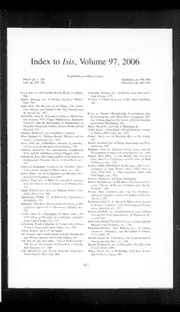
Isis 2006: Vol 97 Index & Table of Contents
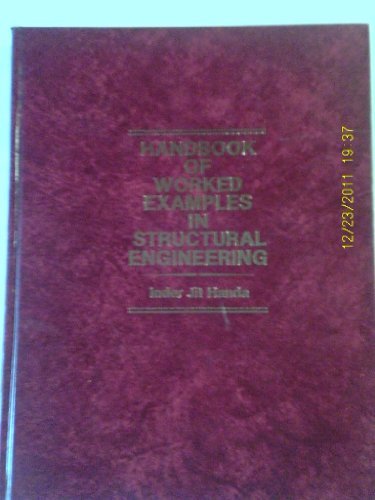
Handbook of Worked Examples in Structural Engineering

The Antichrist Is Coming Soon!

Bürgerliches Recht I: Fall · Systematik · Lösung Allgemeiner Teil
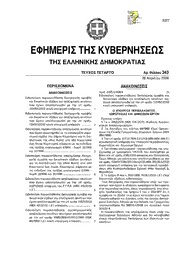
Greek Government Gazette: Part 4, 2006 no. 343
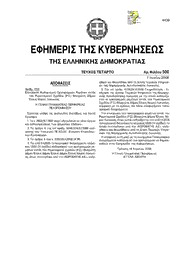
Greek Government Gazette: Part 4, 2006 no. 500
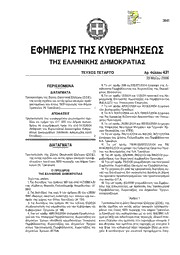
Greek Government Gazette: Part 4, 2006 no. 431
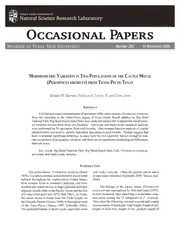
Morphometric variation in two populations of the cactus mouse (Peromyscus eremicus) from Trans-Pecos Texas
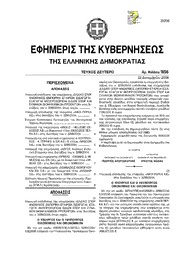
Greek Government Gazette: Part 2, 2006 no. 1856
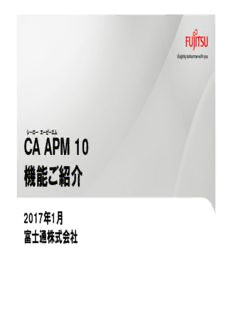
CA APM 10 機能紹介資料
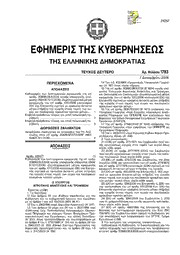
Greek Government Gazette: Part 2, 2006 no. 1783
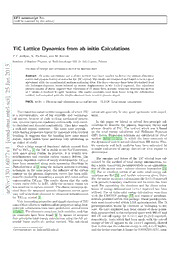
TiC lattice dynamics from ab initio calculations

by Andy Farnell

CADENAS Gemeinsame Erfolge 2016

